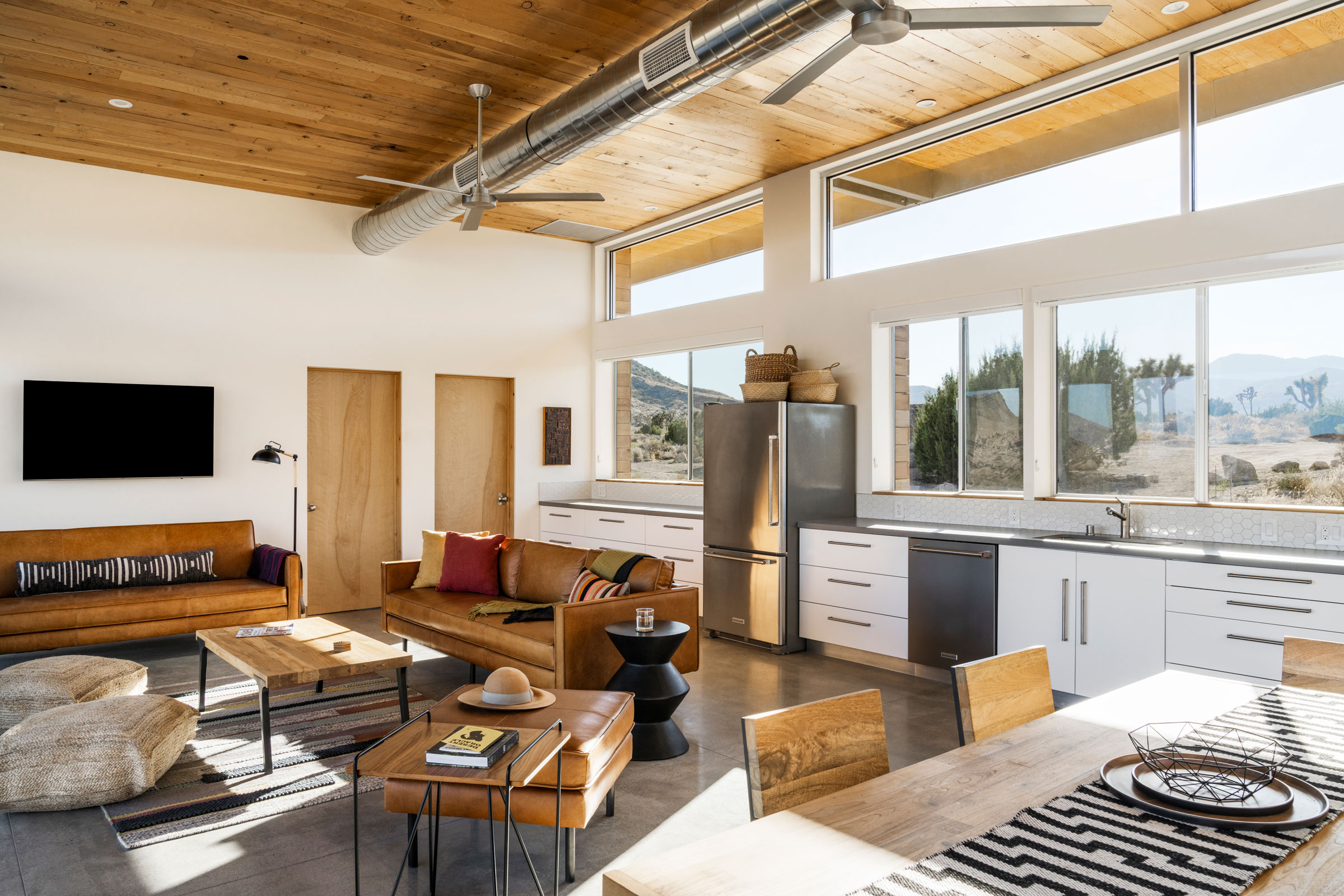Story at a glance:
- Passive design includes buildings with extremely airtight envelopes that prevent infiltration of outside air.
- Solar orientation, insulation, and high-performance windows all add up to meet Passive House standards.
- Passive House–certified homes use an estimated 80% less energy for heating and cooling than conventional buildings.
A natural breeze, operable windows, airtight enclosure—these are just a few things to consider when looking for passive design strategies for any project.
Passive House Institute US (PHIUS) defines a “passive” building as being designed and built in accordance with five building-science principles. Passive buildings must have proper solar orientation, optimal insulation, high-performance windows and doors, an airtight enclosure, and balanced ventilation.
Passive House–certified homes use 80% less energy for heating and cooling than conventional buildings and are significantly healthier and more comfortable than traditionally built homes.
These are just a handful of passive design strategies design teams may consider in their next project.
1. Emphasize Cross Ventilation

Lorcan O’Herlihy Architects designed Nike Icon Studios LA. Photo by Iwan Baan
Lorcan O’Herlihy Architects designed Nike Icon Studios LA as a space where artistry meets efficiency.
The interiors are focused on passive design with an emphasis on cross ventilation.
The architects took advantage of existing operable windows and skylights and bifold exterior doors to promote natural ventilation throughout.
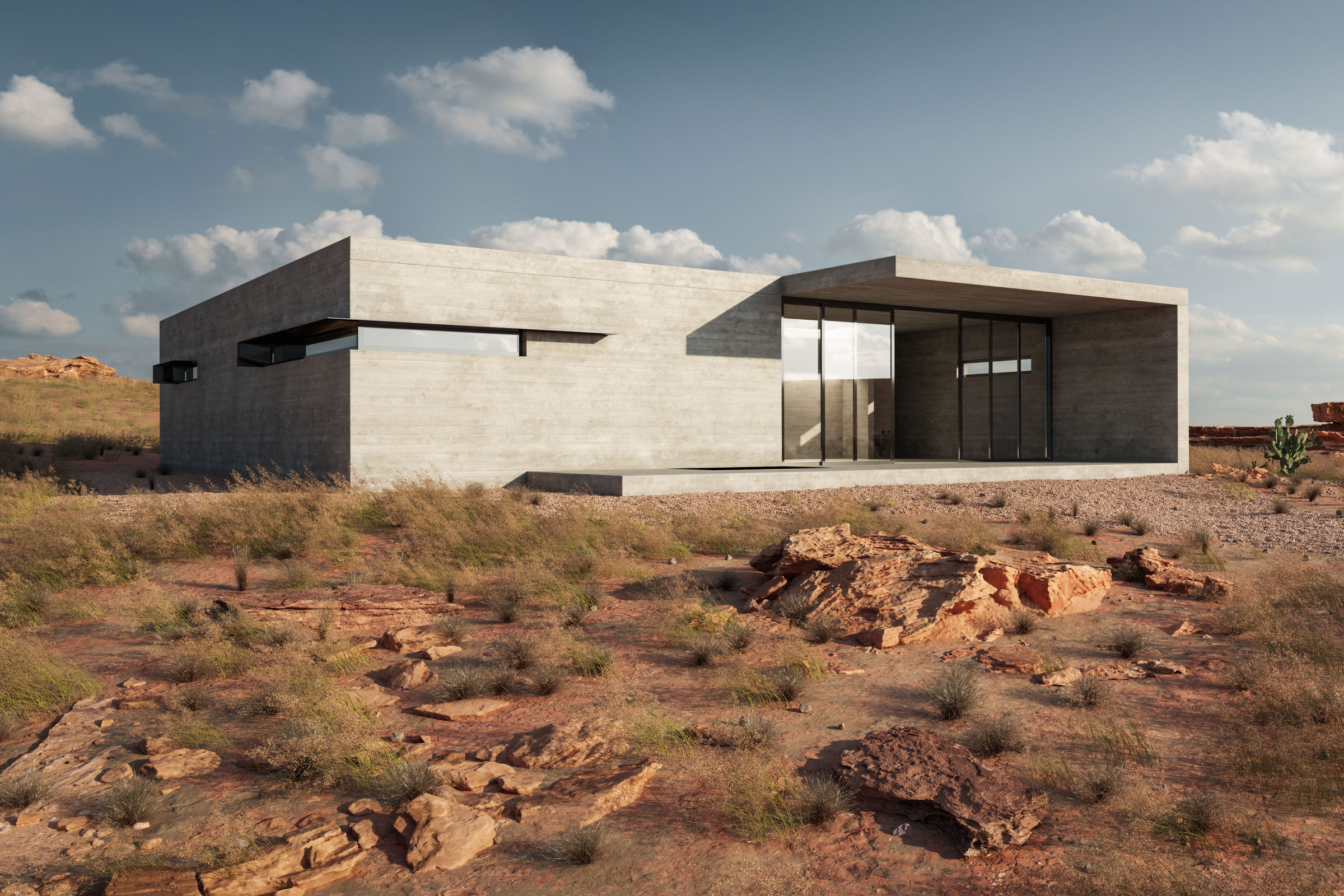
Sharp House was designed to be as economical as possible in construction, with exposed cast-in-place concrete and large glass exposures to the north and south to allow for solar gain and cross ventilation. Photo courtesy of Marc Thorpe Design
There are two distinct types of wind-driven ventilation: cross and single-sided. Buildings using cross ventilation are oriented to allow air to enter through an opening (usually a window), flow unobstructed through the interior space, and then exit through an opening on the building’s opposite side.
Cross ventilation works because of the differences in pressure between the windward (high pressure) and leeward (low pressure) sides of a building. Whenever possible the windward wall should be positioned perpendicular to the direction of a region’s prevailing summer winds in order to make the most effective use of cross ventilation.
2. Keep Spaces Open
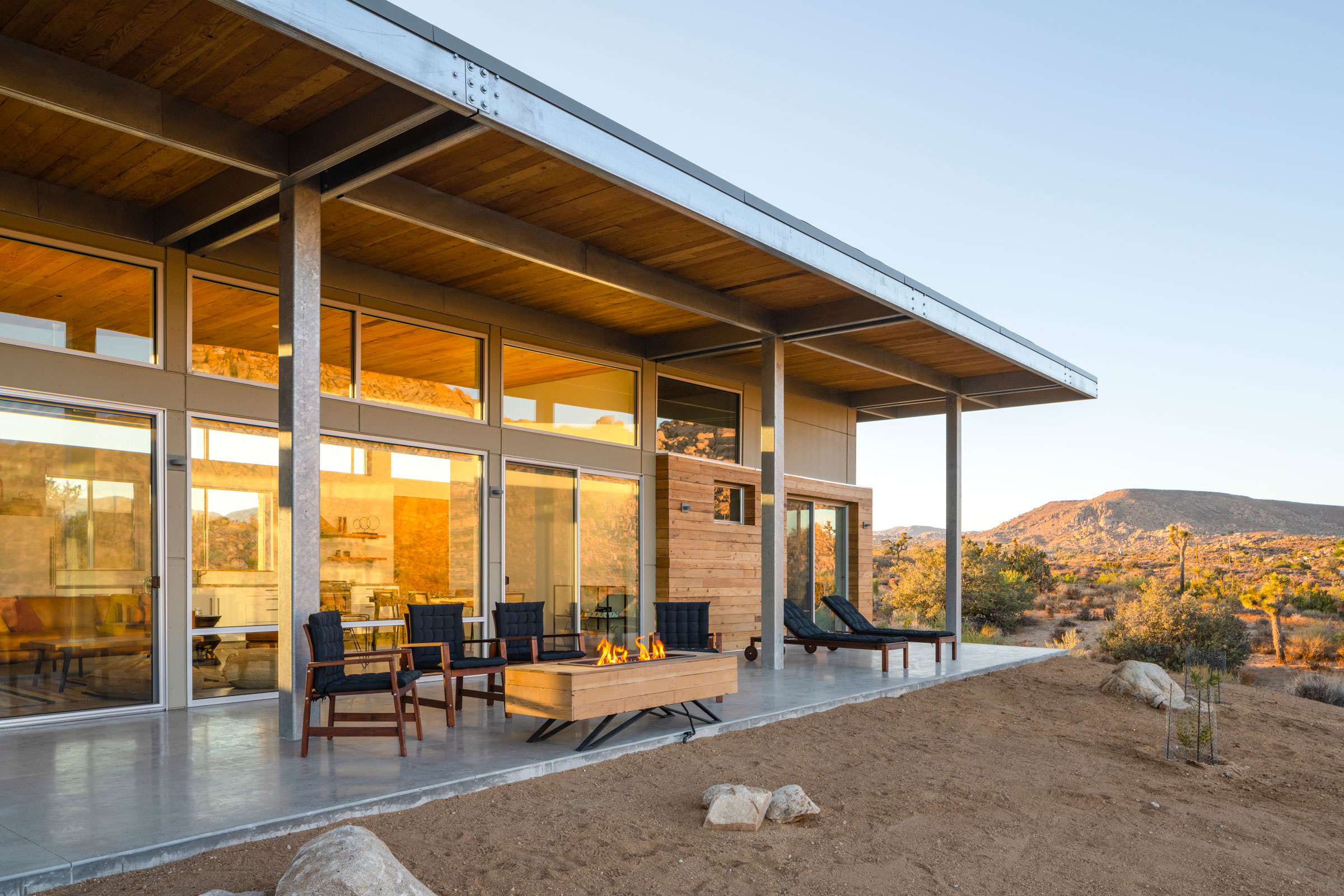
The system for the house’s exposed steel framing was also inspired by simple metal structures on local horse ranches. Photo by Lance Gerber
Inside the Cowboy Modern Desert Retreat in Pioneertown, Jeremy Levine Design kept the main living space free of walls and any other barriers to allow wind to passively ventilate the house.
The design team had three main goals for this project: Capture natural breezes, frame the views so every room has a slightly different vantage point, and orient the house to minimize solar heat gain.
3. Rethink Mechanical Design

This prefabricated passive house is the brainchild of Plant Prefab and Richard Pedranti Architect. Courtesy of Plant Prefab
Plant Prefab launched its Passive House LivingHomes program in partnership with Richard Pedranti Architect.
“Passive House is another major environmental certification program and it integrates uncompromising standards for occupant health, comfort, and energy performance,” said Plant Prefab Founder and CEO Steve Glenn, in a previous article for gb&d.
Glenn says the biggest challenge so far had been accommodating the mechanical system using an efficient prefab approach that minimizes the amount of mod/panel crossovers. “With the Plant Building System accommodating the design to prefab was not a significant challenge; we were able to translate Richard’s designs into a simple combination of Plant Panels and Plant Modules,” he says. “Air distribution was collocated and restricted to the minimal number of modules and crossovers to allow for efficient and seamless installation.”
Plant Prefab’s Plant Building System is a hybrid solution combining a new kind of panel with highly specialized modules, driven by advanced engineering. The system delivers far greater design flexibility, transportation efficiency, and time savings than any other method of prefabricated construction.
4. Control Heat
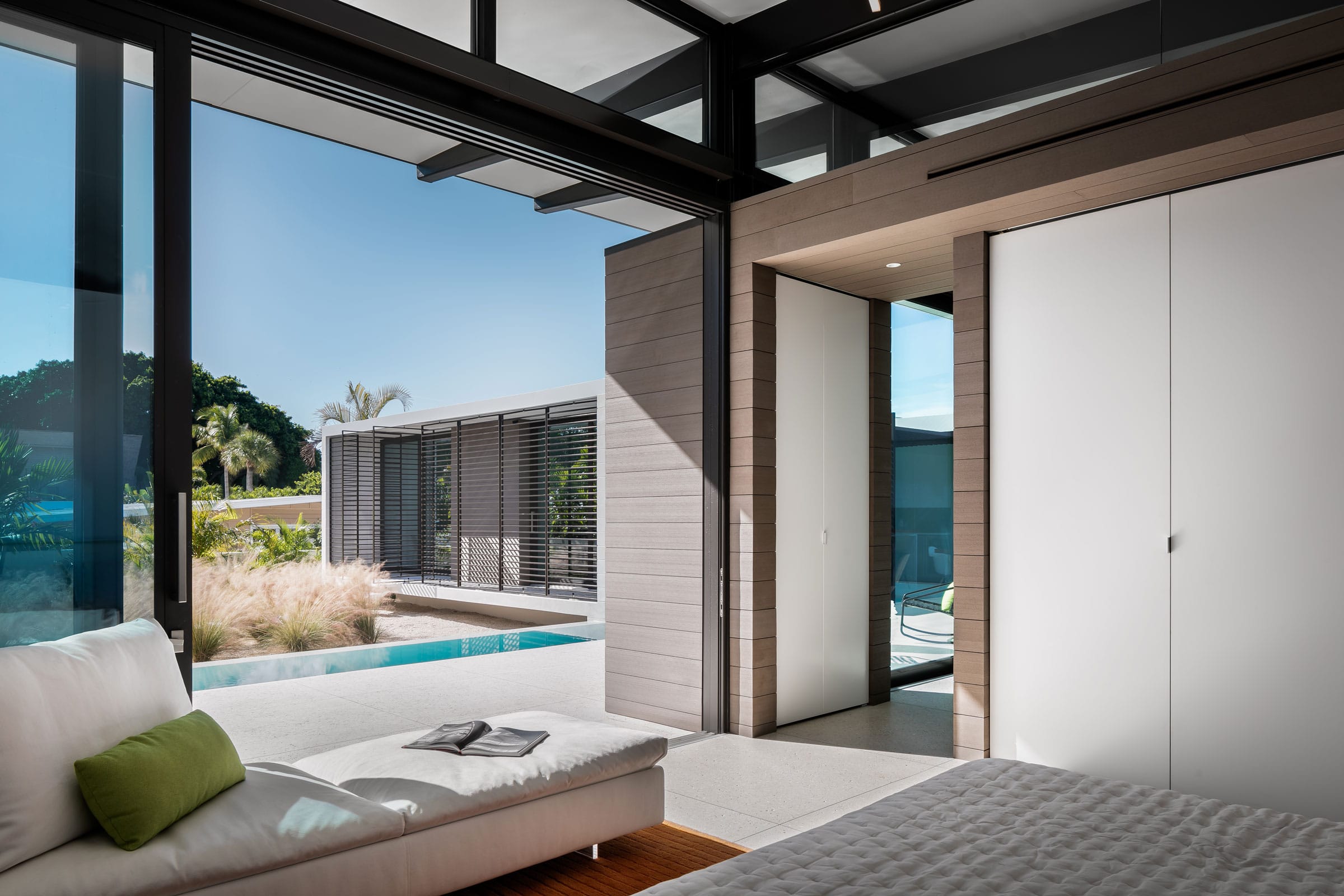
Photo by Ryan Gamma Photography
Hive Architects designed the LS1 House in Sarasota using a clever breezeway and wooden shutters, among other passive design strategies.
Large overhangs and trellises prevent intense heat in summer but still allow the sun to filter in when warmth is needed. These features are both essential and visually compelling—particularly the massive slatted wood shutters across the guest wing, which operate on a rotation.
The brise-soleil over the entryway serves as a wayfinder to the back of the property and also introduces mesmerizing shadows.
5. Have Optimal Insulation
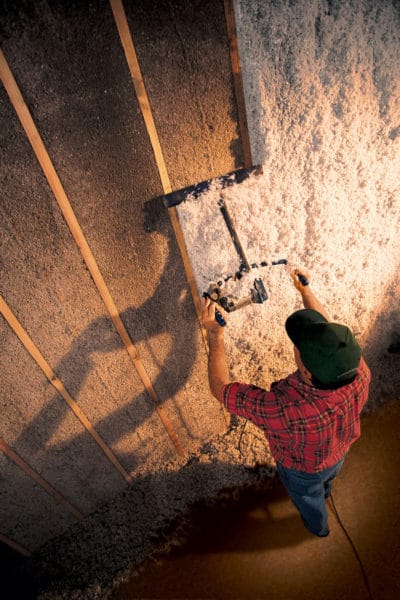
Greenfiber’s wall insulation starts as a plant material, is made into paper, and reused as insulation. Photo courtesy of Greenfiber
Densely packed insulation excels at providing equalizing temperatures both in conventional built assemblies as well as in deeper walls found in net-zero and passive house homes, according to an article written by Jason Todd for gb&d.
“Not only do such walls increase comfort and indoor temperature stability, but they can also be installed cost effectively. Deeper, high-mass walls work well in heating climates and excel in cooling climates as well. They also future-proof our homes with a very low environmental impact,” said Todd, of Greenfiber.
Greenfiber says densely packed insulation also helps to address unwanted air flow. “New construction often features a high level of detail when it comes to controlling air flow, and insulation that adds a second line of defense can aid in that,” Todd wrote.
6. Use High-Performance Windows and Doors
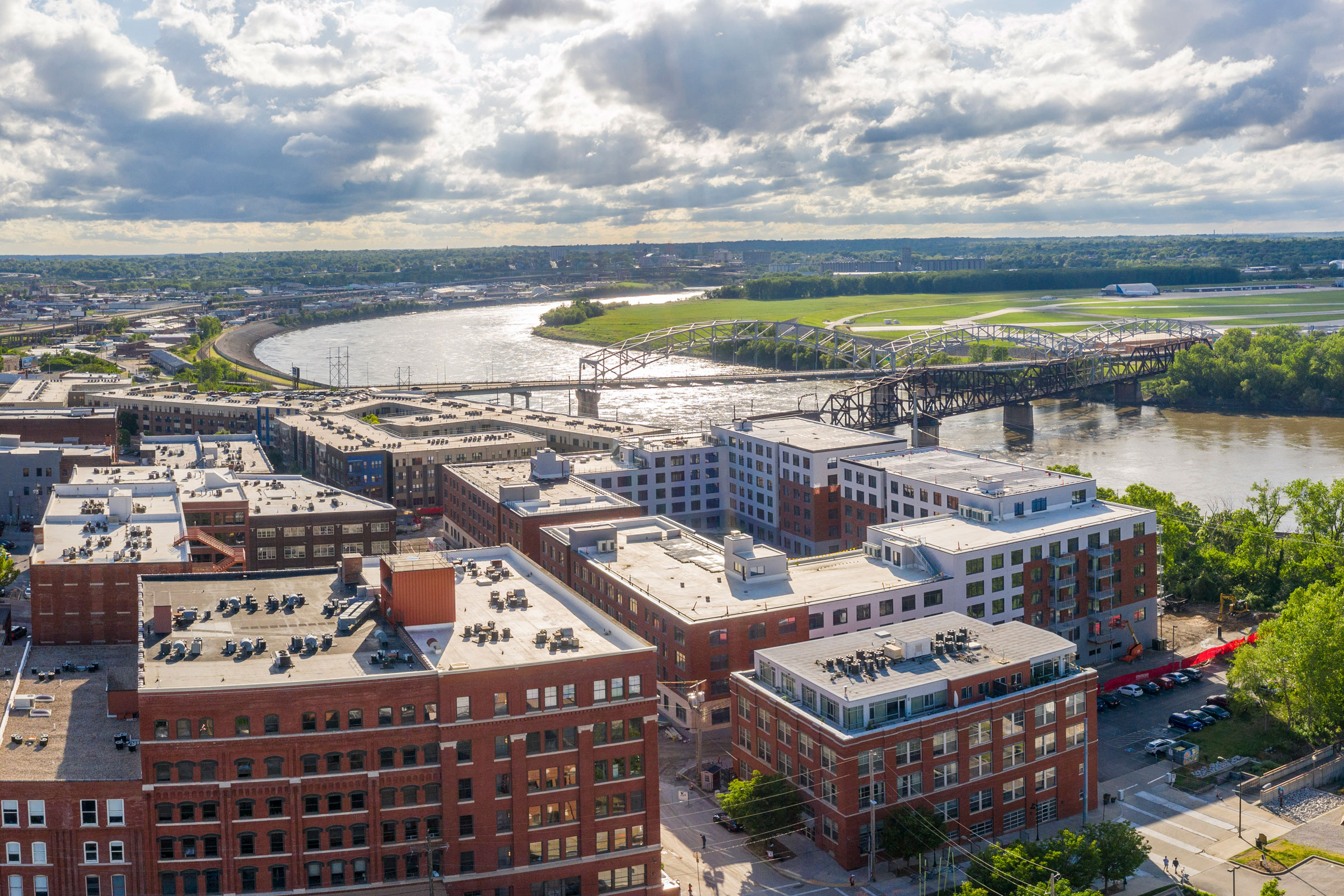
The Second + Delaware Apartments project in Kansas City, Missouri is being called the world’s largest multifamily Passive House development. Photo courtesy of Arnold Development Group
One of the world’s largest passive house projects recently opened in Kansas City, Missouri.
The 330,000-square-foot Second + Delaware Apartments has 276 units and 750 windows. The project was developed by Arnold Development Group and designed by Jeffrey M. White in the popular River Market neighborhood.
The design team installed triple-glazed windows, some of which are as large as 9-by-10-feet, and chose building materials precisely to meet Passive House standards for energy efficiency.
7. Have Proper Solar Orientation
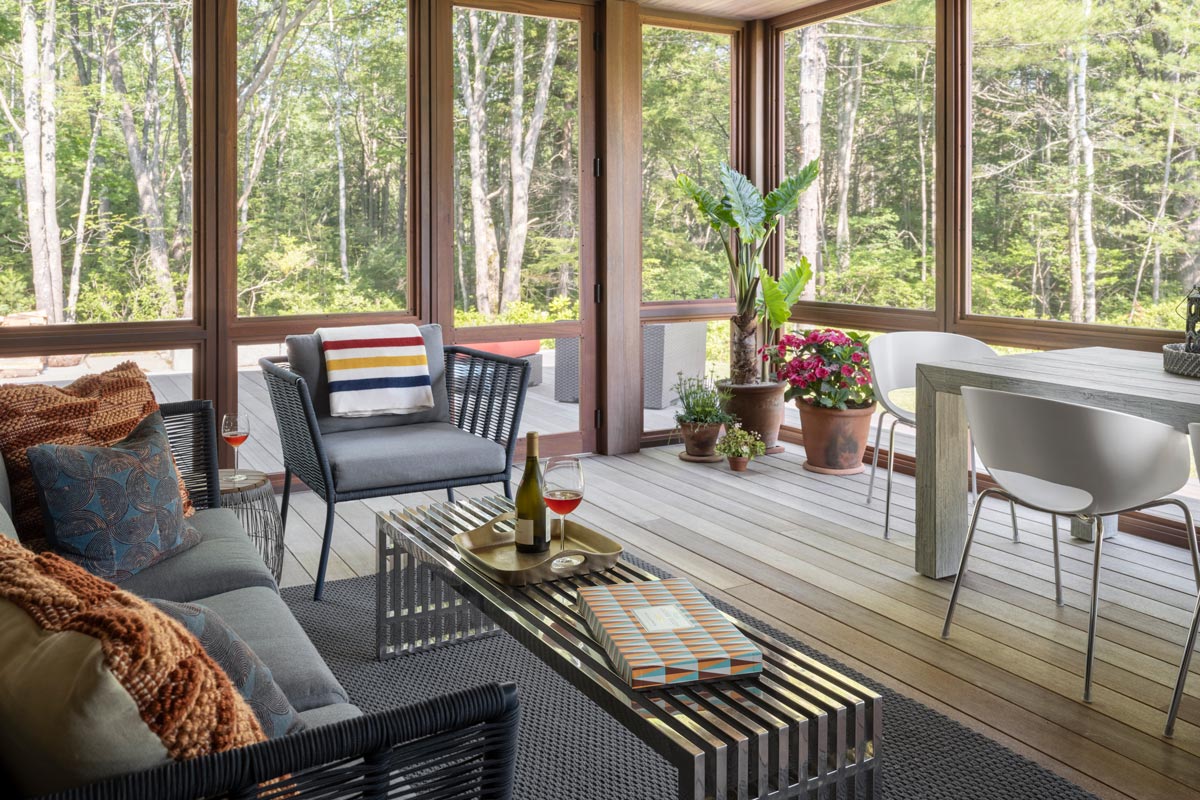
Photo by Trent Bell Photography
Whitten Architects’ fundamental principle for sustainable building—site-specific design—strategically places homes to maximize solar exposure, provide protection from prevailing winds, and take advantage of the site’s natural features. This approach, quite literally, built the foundation for the Binnacle Hill Residence.
“Our site-specific design angled the house just east of south for ideal solar exposure, while the primary living space was situated toward a sunny lawn space against a wooded edge,” said Jessie Carroll, associate principal and project architect at Whitten Architects, in a previous article for gb&d.
The architects also designed an exterior soffit to protect the south-facing door systems from the weather. The large soffit promotes shade in the summer months and passive solar gain in the winter months.
8. Design an Airtight Envelope
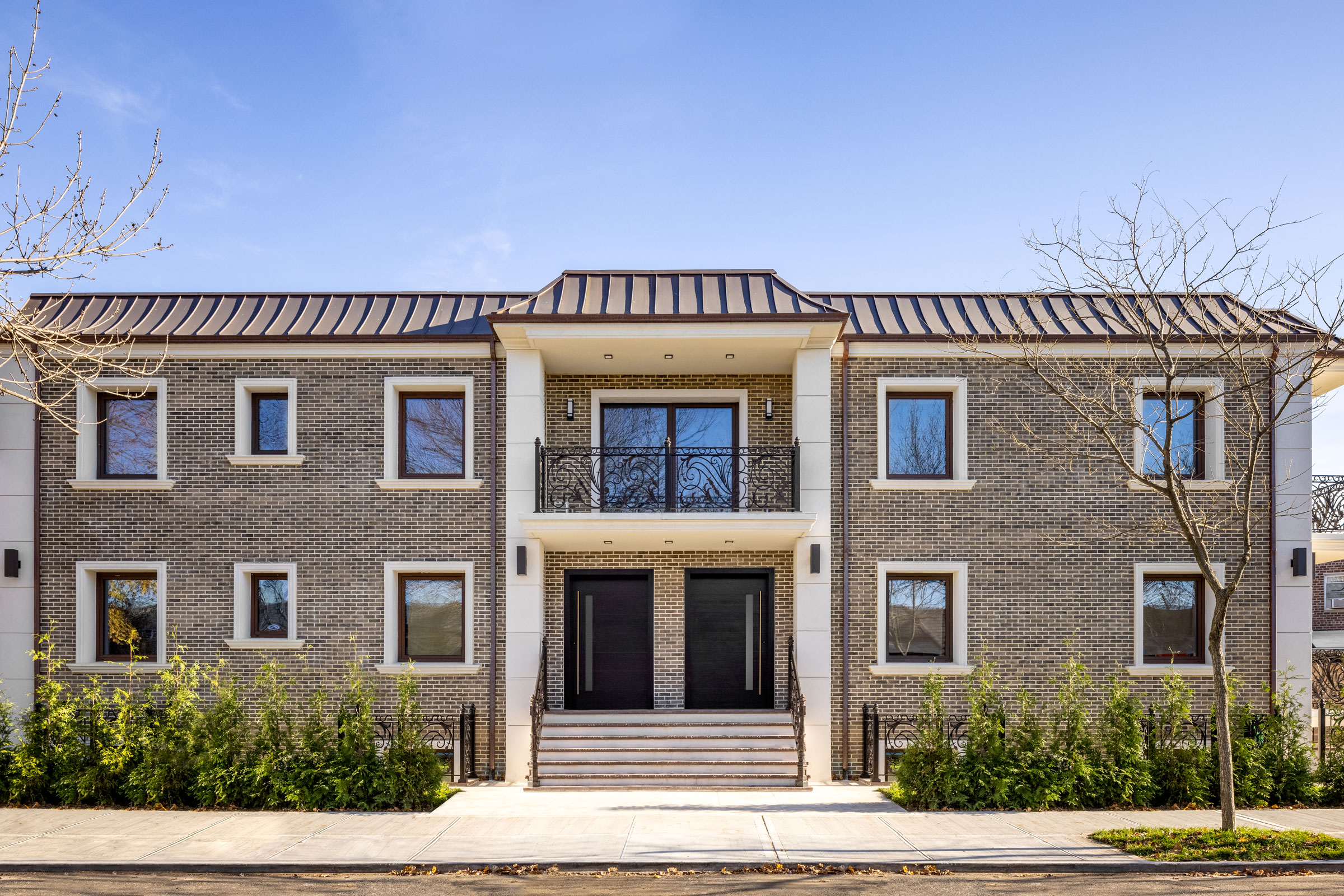
With two separate entrances, Middle Village can be divided or used for extended family as each floor has a full kitchen, living room, bedrooms, and bathrooms. Photo by Brian Berkowitz
Deep window insets at Middle Village in Queens—designed by NODE Architecture, Engineering, and Consulting—reveal the thickness of the insulated concrete forms that help to create an airtight environment.
“A hallmark to Passive House design is building with solar orientation, seasonal insulation levels, and sun path in mind. It’s most favorable to have the southernmost facing part of the building include large windows to allow the low winter sun in the house to provide heat. However, the Middle Village site’s narrowest point is at the southernmost point of the property, which greatly reduced sunlight exposure at that end,” wrote Jakov Saric, in a previous article for gb&d.
Saric said NODE placed large opening lift and slide glass patio doors with krypton-filled, triple-insulated glazing at the southern facade. “These airtight, high-performance windows and doors are positioned strategically to use the sun’s southern exposure while the balconies provide proper shade from the roof overhang. Furthermore, NODE used appropriately angled rooftop solar panels to capture the sun’s rays (per the southern exposure) to allow for maximum winter sun.” The largest solar panels sit atop the structure above an airtight, super insulated roof.
NODE also designed Charlotte Gardens in the Bronx using passive strategies. The seven-story structure has a high-performance envelope, a continuous solar panel above the roof level, and several smaller solar panels along the exterior. The window system is airtight to help reduce heat gain and loss, and the upper levels boast a covered terrace with photovoltaic paneling. Airtight Passive House–certified windows and doors are used throughout the building, providing thermal comfort through the year, and the ERV system will create superior air quality throughout the indoor spaces.
9. Build High-Performing Walls

Thornton Tomasetti and SGA designed the first Passive House–certified residence hall in Massachusetts. Photo courtesy of Wheaton College
Pine Hall at Wheaton College was the first student residence hall to achieve Passive House certification in Massachusetts and the largest such project in the New England region, according to international engineering firm Thornton Tomasetti.
The 45,000-square-foot, L-shaped building was a collaboration between Thornton Tomasetti and SGA, a Boston- and New York City–based architecture and interior design firm. Thornton Tomasetti provided Passive House consulting and whole building energy modeling, as well as building envelope and structural design services, to SGA.
To achieve Passive House, the design and engineering team used highly insulated airtight construction methods, including high-performing walls (R-32), roofing materials (R-50), and triple-glazed windows. They also optimized exterior shading and employed high-efficiency heating, cooling, and lighting systems.
The building design uses 50% less energy than a building built to current codes and is targeting a site Energy Use Intensity of 20 kBtu/st/yr.

